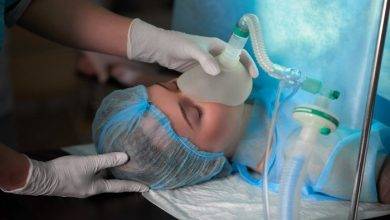
How to use a CPAP sanitizer?
In order to prevent obstruction of the airways during sleep, many people with sleep apnea utilize a device called a continuous positive airway pressure (CPAP) machine. It is essential to keep your resvent ibreeze CPAP equipment clean to ensure the continued success of this life-changing treatment. A CPAP sanitizer is a useful tool for this purpose, since it can effectively kill off bacteria and germs that might cause illness. This article discusses the steps of using a CPAP sanitizer.
CPAP sanitizer: Overview
Continuous Positive Airway Pressure (CPAP) equipment, including as masks, tubing, and humidifier chambers, can be cleaned and disinfected with the help of a sanitizer. Sleep apnea, where breathing stops repeatedly throughout the night, is typically treated with continuous positive airway pressure therapy. Contaminants including germs, viruses, and mold can grow in a CPAP if it isn’t cleaned regularly.
Sanitizing your CPAP machine can be done in a number of ways, including by using UV-C light, ozone, or activated oxygen. Ozone and activated oxygen oxidize and kill infections, whereas ultraviolet-C radiation destroys bacteria and viruses by damaging their DNA. An infection-free CPAP system is beneficial to respiratory health, and these sanitation procedures assist achieve that.
Steps for using a CPAP sanitizer:
1. Assemble your supplies:
Make sure you have all the supplies on hand before beginning the sanitation procedure. The CPAP sanitizer, mask, tubing, and machine itself are all part of this setup. Ozone and ultraviolet light sanitizers are commonplace in CPAP machines. Verify that the sanitizer you intend to use with your CPAP machine is suitable for it.
2. Take apart your CPAP machine:
Turn off your CPAP machine completely. This includes the water chamber, the mask, and any other removable parts. For information on how to safely disassemble your CPAP machine, consult the owner’s manual. The sanitizer needs to be able to reach all surfaces, thus disassembling it correctly is essential.
3. Put the parts into the CPAP sanitizer:
After disassembling your CPAP machine, you can put its parts into a special sanitizer. Follow the manufacturer’s directions regarding the right positioning of objects within the sanitizer. To facilitate complete disinfection, certain sanitizers feature separate compartments for the mask, tubing, and other components.
4. Turn the CPAP sanitizer on:
Follow the included instructions to turn on the CPAP sanitizer. Ozone and ultraviolet (UV) radiation are two methods that can be used in the sanitization process since they destroy bacteria, viruses, and other microbes. Sanitization times for CPAP machines vary by model, so it’s important to read the manufacturer’s instructions carefully.
5. Give it enough time to dry:
Be sure to give your CPAP parts enough time to dry after running the sanitization cycle. To ensure that no trace of ozone or moisture remains, thorough drying is required. This is a necessary measure for keeping your CPAP equipment clean and avoiding the spread of germs. Take your time and let the CPAP dry for the amount of time suggested by the sanitizer’s directions.
6. Put together your CPAP machine:
Reassemble your CPAP machine gently after making sure all parts are dry. If you want everything to fit snugly, make sure you reassemble it according to the manufacturer’s instructions. Examine each part to make sure that there is no breakage or wear that could jeopardize the efficiency of your CPAP therapy.
These six easy procedures can help you use a CPAP sanitizer correctly and keep your CPAP equipment clean. Sanitizing your CPAP machine on a regular basis is crucial for staying healthy and extending the life of your device. Your CPAP therapy experience will be healthier and more productive if you incorporate this cleaning practice into your regular maintenance schedule.




